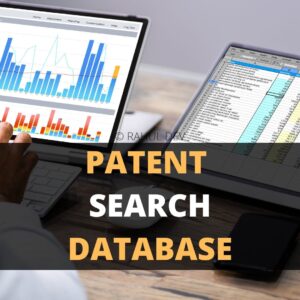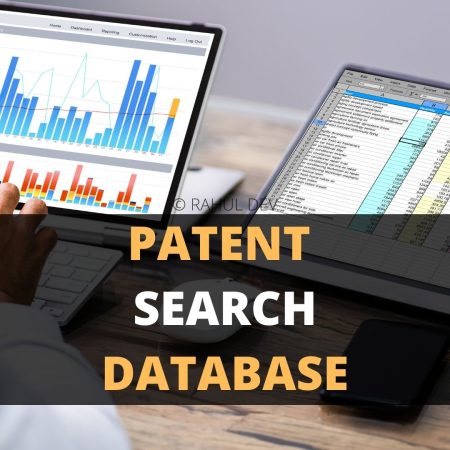Patent Search Insights
Explore Patent Search Best Practices

Trust, Convenience and Innovation
Understand how you can prepare extensive patent search reports

Explore Patent Search Best Practices

Understand how you can prepare extensive patent search reports

Protect your innovations across multiple countries and create strong patent portfolio to boost business valuation
Local and global brand protection through international trademark registrations
Extensive research and business writing for technical whitepapers and B2B content products
The role of selecting a patent search database is important while conducting a patent search to determine a patent eligibility. To achieve the desired results, patent attorneys begin with USPTO patent search database and international patent search database by WIPO as a stepping stone towards a thorough patentability analysis. Patent attorneys also explain to inventors about the steps for conducting an international patent search, as a global perspective is necessary to obtain a strong patent with enforceable patent claims. Specifically, a dedicated patent search strategy covers all major jurisdictions, including custom approach for patent search database of each jurisdiction, such as, for example, USPTO patent search, Canada patent search, Indian patent search, and the like. Subsequently, to ensure a thorough patent analysis, an extensive research across comprehensive patent search database tools like Google patents and Espacenet patent search covering EU jurisdiction is always helpful.
This article covers following topics:
What is patent search database?
Why is a patent database important?
Importance of Patents and Patent Searches
Benefits of Patent Search Databases
Fundamentals to Know Before Starting a Patent Search
How to Navigate the Patent Search Database
Key Features and Tools of Patent Search Database
Interpreting Patent Search Results
Understanding Patent Status and Classifications
Role of Patent Abstracts and Patent Claims
Understanding Patent Search Results
Preparing a Patent Search Report

Before delving into the intricacies of patent search databases, it’s imperative to grasp the fundamentals of what a patent is and why conducting a patent search is vital. As per the basic definition, a patent is aimed at providing an exclusive legal right, issued by governmental authorities, to a specific invention, design, or process for a predetermined period. The exclusivity granted under the patent law allows the patent owner to solely manufacture, utilize, sell, or import the patented innovation during the patent’s lifespan. Generally, patents are categorized into three primary classes: utility patents, design patents, and plant patents. Utility patents are awarded for novel and functional processes, machines, or compositions of matter. Similarly, Design Patents are bestowed for unique, original, and aesthetic designs for manufactured articles, wherein Plant Patents are granted for the asexual reproduction of new and distinct plant varieties. These exclusive rights incentivize inventors by safeguarding their inventions against unauthorized usage, thereby fostering further innovation and progress.
Conducting a patent search is a crucial phase in the patent application procedure. A patent search involves researching the patent search database to ascertain if a similar invention has already been patented. This evaluation aids in determining an invention’s patentability prior to initiating the application process.
Patent searches can conserve both time and resources for inventors by early identification of analogous patented inventions. It also enables inventors to fine-tune their inventions and sidestep infringement complications. Moreover, a comprehensive patent search can offer invaluable insights into the existing technological landscape within a specific domain.
A thorough patent search encompasses search queries for granted patents, published patent applications, and other technical literature available in the public sphere. For an in-depth guide on executing an effective patent search, consult our comprehensive manual on how to navigate patent search databases.
Understanding the essence of patents and the importance of patent searches is indispensable for any inventor or entrepreneur. Armed with this knowledge, you are now equipped to explore the patent search database and commence your patent search journey. For additional guidance, consider perusing our detailed article on the patent search procedure.
Prior to initiating on the patenting process, it’s essential for inventors and entrepreneurs to understand how to proficiently utilize a patent search database. Conducting an exhaustive search can avert unnecessary expenditures of time and resources on ideas that have already been patented.
A patent search database is a comprehensive online repository containing particulars of patents filed and granted worldwide. These databases are generally administered by national patent offices and global organizations. They offer access to patent summaries, illustrations, and legal status data. Multiple patent databases are at your disposal, each featuring its unique set of functionalities and search capabilities. The most extensive databases include millions of patent documents from diverse nations, facilitating a global search for patents analogous to your inventions. Utilizing these databases, inventors can glean insights into existing patents in their area of interest, comprehend the novelty of their invention, and pinpoint potential infringement issues. For a more detailed understanding of the tools available for patent searching, refer to our exhaustive article on patent search tools.
Before diving into the patent search database, there are several basic concepts that one needs to be acquainted with, including terms like, Patent Classification, which implies that patents are sorted into various categories based on their technological attributes. Understanding this classification system can aid in refining your search. Similarly, Keyword Searching refers to a most rudimentary patent search method where you input keywords pertinent to your invention. However, this approach may not yield exhaustive results due to the technical jargon employed in patents. The term Boolean Operators is utilized to amalgamate or exclude keywords in a search, resulting in more accurate outcomes. In use, Patent Citation Searching involves navigating through the references cited in a patent or identifying other patents that cite it. Another important terms is, Patent Families, wherein a patent family comprises all the documents related to a single invention, filed in multiple countries. Understanding these concepts will furnish you with a robust foundation for effectively navigating the patent search database. For more comprehensive knowledge on conducting a patent search, you can read our extensive guide on how to conduct a patent search.
Remember, a meticulous global patent search is an integral component of the patent search process and should not be expedited. It offers critical insights that can influence the outcome of your patent application and the triumph of your invention. Be methodical, employ the appropriate tools, and seek professional assistance if necessary.
Navigating a patent search database can resemble navigating a labyrinth, particularly for those new to the realm of patents. However, with a systematic guide and comprehension of key search features and patent search tools, you can streamline your search process and locate the information you require. Essentially, the patent search process begins with identifying a patent search database that you intend to use. Numerous databases are available, including regional and international options. As a next step, enter your search terms into the database’s search field. This could be the name of the inventor, the patent number, or a keyword related to the invention. Then, use search filters to refine your patent search. You can filter your search by patent status, date, inventor’s country, and more. Subsequently, review the patent search results by clicking on the patent title to view more intricate details about each patent. It is important to peruse through the patent abstract, description, and claims to fathom the scope and specifics of the patent. Accordingly, most patent databases permit you to save your search or bookmark particular patents, making it more convenient for you to locate them later.
Understanding the key features and tools of the patent search database can significantly augment your search efficiency. There are some crucial features to look out for, including, Search Fields, Search Filters, Advanced Search, Save/Bookmark Feature, and the Download Option. At the same time, using Patent Citation Toolsalso helps, as these tools can assist you in tracking the citation history of a patent, indicating how frequently and where a patent has been cited.
Once you’ve executed a patent search using a patent search database, it’s imperative to interpret the results accurately. This involves comprehending the status and classifications of patents and reviewing patent abstracts and patent claims.
When you retrieve a patent from the database, it will possess a specific status and classification. The patent status could be ‘granted,’ ‘pending,’ or ‘expired,’ indicating whether the patent is in effect, applied for but not yet approved, or no longer protected, respectively. The patent classification refers to the technology categoryunder which the patent is filed. Patents are classified according to the Cooperative Patent Classification (CPC) system, which consists of a series of alphanumeric codes representing different technology sectors and sub-sectors. For example, the classification “A01B 1/00” refers to “Agricultural Hand Tools” under the “Human Necessities” section. Understanding these classifications can aid you in accurately assessing the relevance of a patent to your invention. It’s crucial to note that a single patent can possess multiple classifications, indicating the various technological fields it encompasses.
The abstract of a patent offers a succinct summary of the invention, encompassing its purpose, structure, and operation. Reading the abstract can provide you with an initial understanding of what the invention entails and how it functions. The patent claims are the most pivotal part of a patent. They delineate the boundaries of the patent protection, describing what the invention accomplishes and the manner in which it does so. These claims determine the uniqueness of the invention and the aspects safeguarded by the patent. When scrutinizing patent claims, pay heed to the terminology employed and the specific elements delineated. Look for what is indispensable to the invention and what is optional or variable.
Comprehending how to interpret patent search results is a vital aspect of the patent search process. With these skills, you can effectively analyze the patents discovered in your search and derive meaningful conclusions about the patent landscape pertinent to your invention. For a more comprehensive guide on conducting a patent search, consult our exhaustive article on how to conduct a patent search.
After you have navigated and utilized a patent search database, the subsequent step in your patent search journey is to compile a patent search report. This document serves as a comprehensive summary of your patent search findings.
A patent search report is an indispensable document in the patent process. It serves as a testament to your due diligence in researching and examining existing patents. It can assist you in identifying potential obstacles in the patent application process, such as similar existing patents that could affect the novelty of your invention. Moreover, a well-compiled patent search report can prove beneficial in discussions with patent attorneys, investors, and other stakeholders. It offers a clear and concise overview of the patent landscape related to your invention and can accentuate the novelty and uniqueness of your concept.
A comprehensive patent search report should include several key sections, such as, Introduction that should offer a general overview of your invention and the objective of the report, Search Strategy to elaborate on the strategy employed to conduct your search, including the keywords and patent search techniques utilized, a List of Patent Databases Accessed, to incorporate a list of the patent search databases employed during your search, and, a compilation to Patent Listings providing a list of pertinent patents discovered during your search. Each listing should include the patent number, title, a brief summary of the patent, and its relevance to your invention. The additional sections of a patent search report include Patent Eligibility Analysis covering a detailed review of the most relevant patents and their potential impact on your patent application, along with a Conclusion to summarize your findings and offer a general statement about the potential success of your patent application based on the search results.
When utilizing the patent search database, it’s crucial to steer clear of certain common errors that could hinder your search results or lead to inaccurate interpretations.
A frequent mistake is neglecting to consider all potential synonyms or variations of your invention’s key features. This can restrict your search results and potentially overlook relevant patents. Generally, patents are organized into specific classes and subclasses based on their technological domain. Neglecting these can result in an overwhelming volume of irrelevant results. Also, the patent claims define the scope of a patent’s protection. Misinterpreting these can lead to incorrect conclusions about a patent’s relevance to your invention. Moreover, failing to adequately document your patent search process and results can create complications in future patent application processes or potential infringement issues.
To render your navigation of the patent search database more efficient and effective, consider implementing the few strategies as discussed herein. Advanced patent search tools can assist in narrowing down your results by enabling you to search within specific fields, such as inventor name, patent number, or patent classification. Comprehending and utilizing the patent classification system can assist you in discovering relevant patents more swiftly and accurately. Also ensure that you fully understand the patent’s abstract and claims, as these contain crucial information about the patent’s scope and protection. Maintain detailed records of your search process, including the search terms employed, the databases accessed, and the patents deemed relevant. This documentation will prove useful when preparing the patent search report. By steering clear of common mistakes and implementing effective patent search strategies, you can render your navigation of the patent search database not only smoother but also more successful.

As a business coach and thought leader, I cannot emphasize enough the importance of innovation, new software patents, mobile apps, and patents for tech companies, startups, and entrepreneurs. The world is rapidly evolving, and staying ahead of the curve is vital for success. Embracing technological advancements such as blockchain and AI can unlock unprecedented opportunities, streamline operations, and propel businesses into the future with competitive valuation via intangible assets.
Click Here for AI Startup Valuation Guide.
For instance, blockchain technology can revolutionize supply chain management and secure data sharing wherein innovative business models are explained to the audience via technical whitepapers, while AI can automate and optimize decision-making processes. Mobile apps are no longer just a luxury; they have become essential tools for engaging customers and offering personalized experiences. Furthermore, securing digital innovation patents is crucial for protecting intellectual property, fostering innovation, and maintaining a competitive edge. By investing in these areas, businesses can position themselves as industry pioneers and pave the way for a prosperous future after thoroughly conducting the due diligence and reviewing the legal opinion letters, which in case of digital assets can assist in determining the tokens as utility assets or coins as utility tokens before listing the assets at an exchange.
Our team of advanced patent attorneys assists clients with patent searches, drafting patent applications, and patent (intellectual property) agreements, including licensing and non-disclosure agreements. Advocate Rahul Dev is a Patent Attorney & International Business Lawyer practicing Technology, Intellectual Property & Corporate Laws. He is reachable at rd (at) patentbusinesslawyer (dot) com & @rdpatentlawyer on Twitter.
Quoted in and contributed to 50+ national & international publications (Bloomberg, FirstPost, SwissInfo, Outlook Money, Yahoo News, Times of India, Economic Times, Business Standard, Quartz, Global Legal Post, International Bar Association, LawAsia, BioSpectrum Asia, Digital News Asia, e27, Leaders Speak, Entrepreneur India, VCCircle, AutoTech).
Regularly invited to speak at international & national platforms (conferences, TV channels, seminars, corporate trainings, government workshops) on technology, patents, business strategy, legal developments, leadership & management.
Working closely with patent attorneys along with international law firms with significant experience with lawyers in Asia Pacific providing services to clients in US and Europe. Flagship services include international patent and trademark filings, patent services in India and global patent consulting services.
Global Blockchain Lawyers (www.GlobalBlockchainLawyers.com) is a digital platform to discuss legal issues, latest technology and legal developments, and applicable laws in the dynamic field of Digital Currency, Blockchain, Bitcoin, Cryptocurrency and raising capital through the sale of tokens or coins (ICO or Initial Coin Offerings).
Blockchain ecosystem in India is evolving at a rapid pace and a proactive legal approach is required by blockchain lawyers in India to understand the complex nature of applicable laws and regulations.